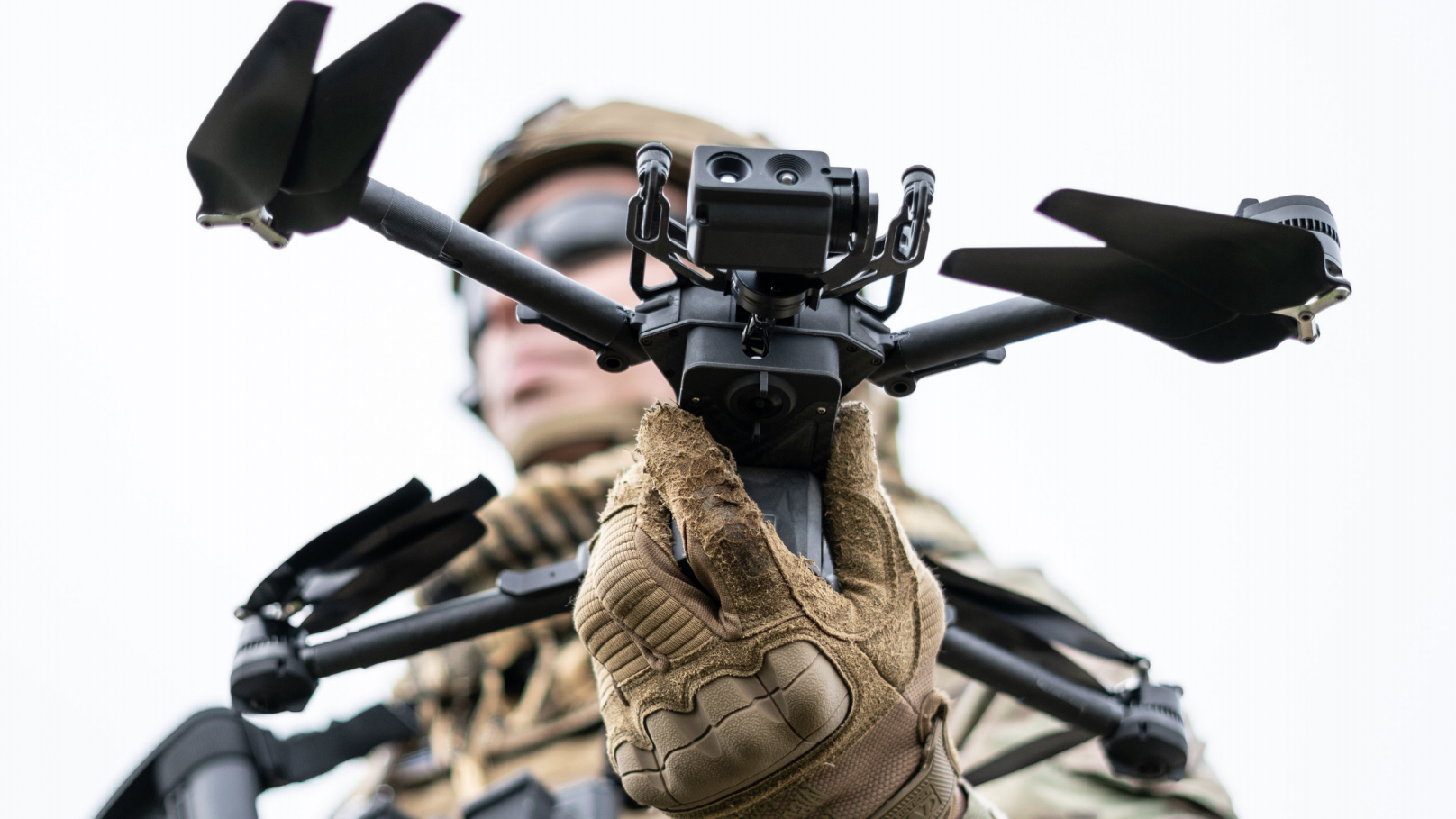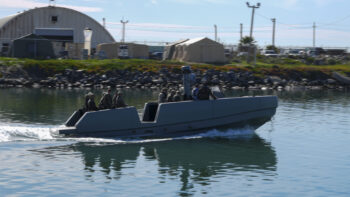
A soldier handles a commercially-developed drone acquired via the Defense Innovation Unit (DIU).
WASHINGTON — At a time when the Defense Department is doing its best to woo more private investment into promising cutting edge tech, the chief of the Pentagon’s Defense Innovation Unit (DIU) said his office, for one, needs to make itself a more attractive “counterparty” to the people with deep pockets.
“There’s a ton of capital out there. Billions and billions and billions of dollars of capital. … The problem isn’t that there’s no capital, it’s that we’re not a great counterparty for the capital,” Doug Beck said on Tuesday. “We’ve got to be much better at helping to identify and then communicate which things are truly strategic and then which things have a true path to scale.”
Asked at a Defense Acquisition University event how DIU is moving from a risk-averse organization to one that can take risks more in line with the world of venture capital, Beck said that by being a better counterparty, “the people who assess, price, take and manage risk for a living can do so on our stuff and do it in a way that helps lead to the scale that we need.”
Beck, who was tapped to lead DIU in April, has said throughout the year that the agency is at a “tipping point” where it will look less at proving the worth of new technologies and more on scaling the ones available for broad military use. In an interview with Breaking Defense, Beck called it a “pretty significant shift” in how it will operate as it also aims to become more embedded across the Pentagon.
In addition to playing more nicely with outside investors generally, in order to help push DIU into its new phase and help accelerate the adoption of technologies, two industry groups are advocating for the House and Senate appropriations committees to fully fund a $1 billion “hedge portfolio” for DIU itself, a move backed by the House.
In an Oct. 24 letter, the Silicon Valley Defense Group (SVDG) wrote that funding provided by the hedge portfolio, or the Non-Traditional Innovation Fielding Enterprise (NIFE), “would enable DIU to accelerate fielding of innovative capabilities to the services and the combatant commands at speed of relevance.”
“This provision represents a clear opportunity for Congress to promote the development of emerging defense and dual-use innovations and help the US better compete in this era of techno-security competition,” Bilal Zuberi, one of the signatories of the letter and general partner at Lux Capital, said in a statement.
Separately, the Association for Uncrewed Vehicle Systems International (AUVSI) sent a letter to the congressional appropriations committees also advocating for the hedge portfolio to “support integration of various systems, within three years.”
According to House appropriators, “if properly executed, this hedge has the potential to reduce the the taxpayer’s burden by leveraging private capital, expand America’s economic advantage by accelerating emerging technology, and broaden the pool of talent supporting national defense.”
The hedge strategy was proposed last year by then-DIU Director Michael Brown and US Navy Rear Adm. Lorin Selby, chief of naval research.
The strategy encompassed “leveraging emerging technologies to field alternative concepts and capabilities at scale to both complement and provide a hedge to our existing, exquisite weapons system platforms” and included applying existing commercial solutions quickly and fielding the capabilities within three years in an effort to provide an element of unpredictability for adversaries who focus on US platforms.
In an outgoing interview with Breaking Defense last year, Brown said he had been frustrated with the lack of support from DoD leadership and described a “benign neglect” around DIU’s budget. Both the SVDG and AUVSI advocated for fully funding DIU in fiscal 2024 and warned that without robust funding, the Pentagon will struggle to acquire key technologies.
“I do think that we could accomplish more if we had more resources, and I look forward to seeing the department realize that there’s a lot more that we can gain from commercial technology, which is the key to defense innovation and modernizing the force,” Brown said then. “Over time, things have a tendency to get corrected and move in the right direction.”
Services making progress putting the J in CJADC2: Vice Chief Grady
Adm. Christopher Grady, vice chair of the Joint Chiefs of Staff, said the Joint Requirements Oversight Council is “well on pace” to putting more “teeth” into its processes for driving the military services to fulfill joint requirements.


























